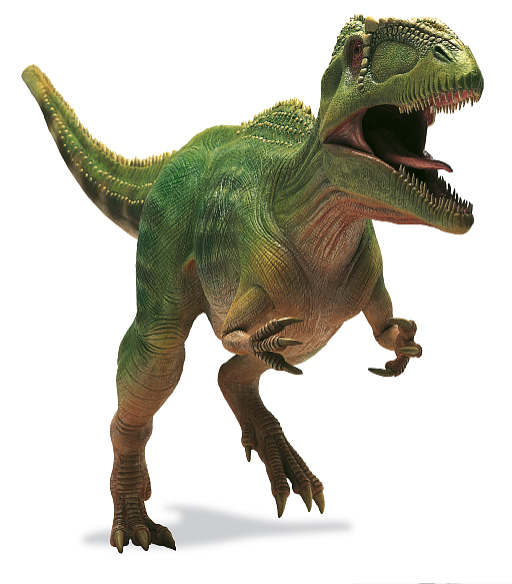The dinosaur of the month of December is... The Iguanodon
The Iguanodon was the first herbivorous dinosaur to be discovered. It was discovered in 1822 and when it was discovered, we thought that the spike on its thumb was its nose and that it was a dragon. It is actually a dinosaur, and, more precisely, a hadrosaur. It was herbivore and lived in Europe, Africa and the United States.

The dinosaur of the month of November is... the Troodon
This species was one of the most intelligent dinosaurs. It is believed to have eaten insects, but it may also have eaten meat. It lived during the Cretaceous and measured two meters long. Its remains have been found in Canada and the United States.

The dinosaur of the month of October is... the Mamenchisaurus
This herbivore dinosaur species who lived during the end of the Jurassic period could measure up to 35 meters long. I was discovered on a chinese construction site in 1952, and it lived in China. It was the 3rd longest dinosaur after Supersaurus and Sauroposeidon. However the discovery of the Dreadnougthus may make Mamenchisaurus the 4th longest dinosaur.

The dinosaur of the month of September is... the Micropachycephalosaurus
Quand nous l'avons découvert, nous pensions qu'il faisait partie de la famille des pachycéphalosaures, d'où vient son nom, mais il fait partie de la famille des Cératopsciens, comme le Tricératops. The Micropachycephalosaurus has the longest dinosaur name, with 23 letters in its name. It was a herbivorous dinosaur species that lived in China. When we discovered it, we thought it was a member of the pachycephalosaurus family, whence its name. However, in 2011, we discovered that it was a Ceratopscian, like the Triceratops.

The dinosaur of the month of August is... the Amargasaurus
This herbivore that lived at the start of the Cretaceous period had a short neck compared to the other sauropods but had bony spikes coming out of its neck and body that were connected by a long sail made of skin. It maybe used it to attract females.

The dinosaur of the month of July is... the Ankylosaurus
This herbivore had a sharp and bony shell-like armor covering its whole body, including it eyelids, which served to protect if from predators. It was also had a massive club at the end of its tail that it could swing at its adversaries and which was big enough to break the bones of other dinosaurs. It lived at the end of the Cretaceous.

The dinosaur of the month of June is... the Titanosaurus
Un dinosaure herbivore gigantesque, probablement le plus grand dinosaure découvert jusqu'à maintenant. Il avait un fémur de 2,5 mètres de haut, une longueur totale de 37 mètres et une hauteur de 20 mètres avec la tête dressée. Il vivait en Argentine, durant le Crétacé.
The dinosaur of the month of May is... the Gigantosaurus
Un dinosaure carnivore plus grand que le Tyrannosaurus Rex mais plus petit que le Spinosaurus, il était au haut de la chaîne alimentaire et mangeait n'importe quel animal, incluant des sauropodes quand ils chassaient en groupe, comme l'Argentinosaurus. Ce dinosaure du Crétacé vivait en Argentine.
The dinosaur of the month of April is... the Allosaurus

The dinosaur of the month of March is... the Argentinosaurus
Ce dinosaure herbivore est, jusqu'à maintenant, le deuxième plus grand dinosaure découvert (après le Titanosaurus, dinosaure du mois de juin) mesurant 35 mètres de long et 100 tonnes! En fait, c'est mon dinosaure préféré, alors j'ai fait exprès de le mettre au mois de ma fête. Il vivait au Crétacé, en Argentine, d'où vient son nom. Il était une proie du Gigantosaurus et du Mapusaurus, deux espèces de carnivores énormes.

The dinosaur of the month of February is... the Baryonyx
Ses dents pointues et son long museau comme celui d'un crocodile l'aidaient à attraper des poissons glissants. Il vivait surtout au Maroc, en Égypte et dans le nord de l'Afrique. Il vivait durant le début du Crétacé. This dinosaur, the Baryonyx unlike most dinosaurs, was a piscivore. Its pointy teeth and its long snout helped this dinosaur catch slippery fish. It lived in north Africa during the Cretaceous period.

The dinosaur of the month of January is... the Dacentrurus


